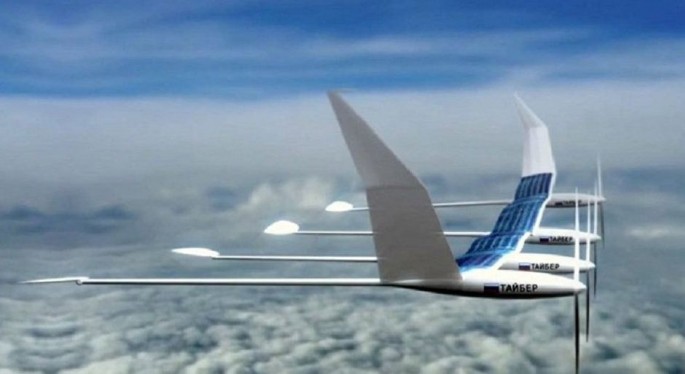Russia's successful test earlier this month of its high-flying, long distance atmospheric satellite (atmosat) named "Sova" (Owl) over the Arctic is raising concerns this supposedly scientific aircraft will eventually be put in the service of the Armed Forces of the Russian Federation that is strengthening its military power in the Arctic region.
Sova is Russia's first atmosat. The development and construction of Sova was financed by the Russian Foundation for Advanced Research Projects, Russia's equivalent of the U.S. Defense Advanced Projects Agency or DARPA. The "foundation" is Russia's advanced military research agency tasked with ensuring Russian superiority in military technologies.
Russian media claims Sova will help ensure the continuous monitoring of the Earth's atmosphere at high arctic latitudes and will also serve as a telecommunications hub.
The main goal of Sova, however, is the development of Russia's North and Siberia, claims Igor Denisov, the foundation's Deputy Director General.
Sova has a wingspan of nine meters andsuccessfully completed a 48-hour non-stop flight during its maiden voyage.
Denisov said Sova is solar-powered, and is one of the basic platforms for developing key technologies. Since Russia is a northern country with not that much sunlight, what makes Sova special is that it's designed for continuous operations in the northern latitudes, including the Arctic.
"In the near future we will make a prototype with (wingspan of) 27 meters (88.6 feet), which will be able to work even beyond the 70th parallel (north), where there is no sun but is always the polar night. The future of such devices is very interesting, especially if they are flying over uninhabited areas of North and Siberia," said Denisov.
Atmosats like Sova can fly continuously and are limited only by the lifespan of their microelectronics. Denisov noted Sova refers to a family of the research and development projects.
Sova's capabilities make it suitable as a relay satellite for Russian forces in the far north, however. Russian communications in the Arctic depend on satellites.
Experts said this kind of communication is expensive and not always effective, especially for real-time monitoring needs. An atmosat can fulfill this role cheaper and more effectively than satellites, manned aircraft or unmanned aerial vehicles.
The Russian military is strengthening troops stationed in the Arctic on a permanent basis, according to the Russian state news agency TASS.
Last January, the Russian armed forces began a buildup of permanent group of troops in the Arctic. Russian Defense Minister Sergey Shoygu said this reinforcement "will expand the armed forces' capabilities for securing the defense of the national interests in the region."
A united strategic command encompassing the Arctic was established in December 2015 with the Northern Fleet as the mainstay of this new strategic formation. The new "Northern Command" is developing new bases on the Arctic coast and islands. Modern military infrastructure facilities are being on a number of Arctic archipelagoes.



























